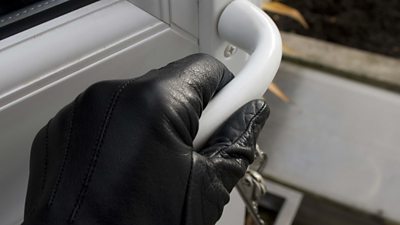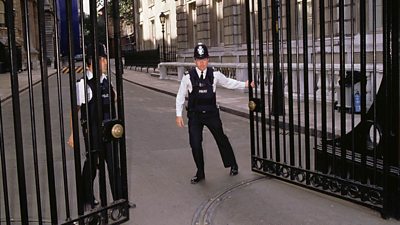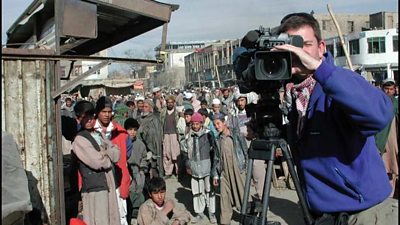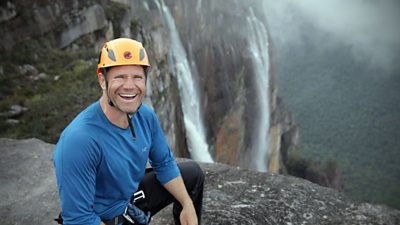Getting to and from this area and the activities you plan will all have a significant impact on your planning, team size, resources needed and emergency response arrangements.
Read the Emergency Medical Evacuation (Medevac) guide when planning for remote locations.
What Can Go Wrong?
- Getting Lost – Inexperienced crew with poor map reading skills. Unfamiliar locations.
- Mechanical breakdown- Long wait for emergency assistance, vehicles being unsuitable for the terrain or in poor condition. Vehicles may form a key part of any medical evacuation plan.
- Inclement weather/exposure- Crew can be exposed to extremes of weather, making navigation or working difficult or unsafe and result in the crew being stranded until conditions improve.
- Injury/illness- Plan to deal effectively injuries sustained, or illness in the remote area.
- Fatigue- Weather, terrain and length of time working will affect fatigue. The amount of production kit you need, including the kit you need to stay sustained with food and liquids and shelter, will significantly increase the weight/bulk you have to carry.
- Communication failure. – Equipment or battery failure, poor reception.
- Wild animals – In certain locations especially abroad, remote locations may have dangerous wild animals.
- Unfamiliar terrain – May include jungle, mountains, rivers, woodland, fields.
Legal/���˿��� Requirements
- ���˿��� Editorial Guidelines.
Control Measures
General Controls
- Ensure your team have navigation skills and ability to plan a route; and have access to local knowledge appropriate to the level of risk the location and activity poses. Where possible, organise someone familiar with the area to accompany you. Avoid working alone. Leave your route plan details and establish a call in procedure with base. Have an emergency response plan, should the call in to base fail to materialise.
- Where practicable, use suitable navigational equipment such as GPS, satellite navigation systems and maps and ensure personnel have been trained in their use and can navigate under challenging conditions
- Source vehicles from known suppliers and be specific when booking about what they are needed for. Be specific about the volume and weight of the equipment you will need to carry in the vehicle along with the number of passengers. If sourcing abroad use a reputable fixer to do this. Check the vehicle upon delivery, brakes, lights, tyres, fluid levels. Check spare tyre, jack and wheel brace. Know how to use them before you go. If your vehicles play a key part in any evacuation plan where emergency help is limited consider taking two vehicles and ensure that the type of vehicle selected could carry an immobilised casualty. Ensure you have access to fuel. Obtain 4x4 driver training if the terrain is to be extreme.
- Ensure clothing and footwear is suitable for the conditions and time of year. Plan for a worst case scenario of how long you may be stranded in a location and take food, clothing and emergency shelter to deal with this. Study the weather forecasts leading up to deployment and any historical weather information you can. Decide early in the planning what conditions are acceptable.
- Through your risk assessment decide what injuries are foreseeable on the trip and ensure you have the first aid/medical competency and equipment to be the initial point of treatment. Through your emergency medical evacuation plan then decide how long you will have to sustain that care and if you would have to move a casualty. This will determine if a first aider or medic is most appropriate.
- Ensure your team are fit enough for the task. You are only as strong as your weakest crew member. If you need to physically carry your production and personal kit then train for it leading up to deployment - as a rule of thumb 1/3 of your body weight is an upper limit. Ensure that filming schedules are realistic. Review the whole schedule before deployment and map it against the agreed conditions of service. Where you cannot meet these requirements ensure your risk assessment has considered it and get senior manager approval before deploying.
- Depending on how remote your location is you should have multiple means of communication to compensate for any failure. Examples are satellite phone, mobile phone, vhf radio, emergency response beacon. You should discuss the scenario’s where each element of your communication plan may fail and have a plan to compensate for that. Carry additional batteries and keep communication kit protected from the elements. Delegate the task of checking communication kit to a team member daily.
- Ensure you have all contact numbers needed such as mountain rescue, coastguards, local police, team members, base location, office etc. Pre-programme these numbers into phone or laminate small call cards.
- If dangerous wild animals are known to in the area, seek specialist advice with regards to appropriate control measures.
- Ensure personnel are suitably experienced, physically able and where required, qualified, with terrain and environment likely, such as mountains; have correct suitably maintained equipment clothing and kit including PPE.
Division Specific Issues
- For some remote working, sign off may be needed by a senior manager from your division.
FAQs/Did You Know?
- The 60 minutes after a traumatic injury is sometimes referred to as the golden hour, a window of time in which a victim is thought to have the greatest chance of survival if given medical attention. Remember this when planning your production and emergency arrangements.
Useful documents
-
-
[���˿��� network only]
Recommended links
-
[Gateway]
-
[Gateway]
-
Personal security topics
-

Security (Personal)
Measures you can take to help protect yourself -

Security (on Location)
Advice for maintaining security on productions -

Covert Filming
A guide to a genre of programmes which involve investigative journalism, surreptitious and covert filming or recording, creating potential personal security risks. -

Courts of Law
A guide to working in, outside or, around courts following a news story. -

Demonstrations, Protests, and Crowds
���˿��� Safety has a whole host of safety guidance to assist teams when they are planning a deployment to a demonstration or protest. -

Door-Stepping
The risks of obtaining an interview, or piece to camera, from a contributor without prior arrangement or agreement. -

Harassment and Stalking
Guideline to harassment and stalking, including internet / social media trolling. -

Lone Working
This Guideline sets out the hazards and precautions to be considered when lone working, whether it is in the office, on location or overseas. -

Security on Location
Guideline provides measures to help mitigate the security threats associated with production activities on location, including door-stepping, covert filming, working with crowds and public order issues. -

Violence and aggression
Guidance on dealing with violence and aggression
More from SSR
-
Your platform to record accidents, risk assessments, assurance monitoring and inspections
-
Safety Equipment Stores
Just one number to call: 020 3614 5155 -
���˿��� Safety Guidelines
An A-Z of ���˿���'s Health and Safety Guidelines -
Safety Advice Line: 0370 411 0464 Email: safety@bbc.co.uk
- A-Z of ���˿��� Safety Guidelines
- Accident Reporting and Investigation
- ���˿��� Health & Safety Policy
- Contractors (incl. vetted lists)
- Contributors
- Fire Safety
- Freelancers
- Independent Production Companies
- Risk Assessment
- Safety Alerts
- Safety Responsibilities
- Safety Training
- Sets & Premises Safety Guide
Events guidance - key links:
- Exhibitions
- General Guidance
- Indoor Location Recce Checklist
- Outdoor Location Recce Checklist
- Major Incidents & Emergency Planning
- Marketing and Promotional
- Noise Exposure
- Planning and Management
- Responsibilities
- Responsibilities Form
- Laser Lighting Effects
- Strobe Lighting
- Temporary Stages and Rostra
Health topics - key links:
- (���˿��� network only)
- Contributors Fitness to Participate
- Display Screen Equipment (DSE)
- (���˿��� network only)
- First Aid and Welfare on Location
- International Travel - Risks & Health
- Manual Handling
- Mental Health: ���˿���page
- (���˿��� network only)
- Personal Health and Wellbeing
- Pregnancy
- Psychological Trauma Support & Trauma Risk Management (TRiM)
- Tiredness and Fatigue
- Travel Health Contacts
���˿��� High Risk - key links:
- CBRN and Industrial Spills
- Covert Filming
- Crisis Management and Security Support
- Demonstrations, Protests and Crowds
- Disaster Coverage
- Door Stepping
- (���˿��� network only)
- (���˿��� network only)
- Public Order
- Safety Equipment Stores
���˿��� Journalism - key links:
���˿��� Productions - key links:
- Aerial Filming and Airfields
- Animals: Displaying and handling for performance
- Boats: Working on
- Children and Young People
- Driving
- Electrical Equipment and Systems
- First Aid and Welfare on Location
- Food Safety (Cooking and Catering)
- Remote Location Working
- Roads and Streets: Working by
- Security of Productions on Location
- Stunts
- Tiredness and Fatigue
- Unmanned Aerial Systems (UAS aka Drones)
- Vehicles: Recording in, from and around
- Working at Height: Mobile Elevating Work Platforms
- Working at Height: Tower Scaffolds
���˿��� Radio - key links:
- (���˿��� Network only)
���˿��� Security - key links:
���˿��� Sport - key links:
About this site
This site describes what the ���˿��� does in relation to managing its health, safety and security risks and is intended for those who work directly for the ���˿���.
It is not intended to provide instruction or guidance on how third parties should manage their risks. The ���˿��� cannot be held liable for how this information is interpreted or used by third parties, nor provide any assurance that adopting it would provide any measure of legal compliance. More information
Some links on this site are only accessible when connected to the ���˿��� network
